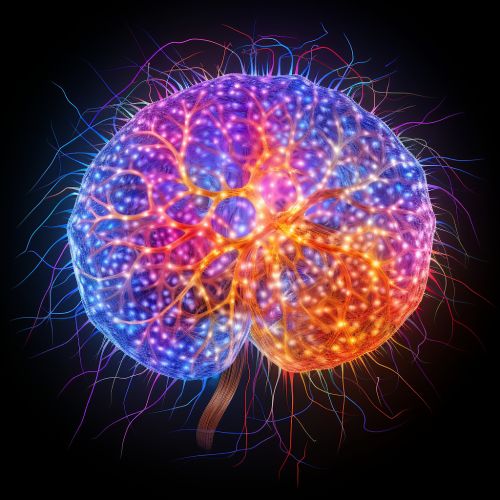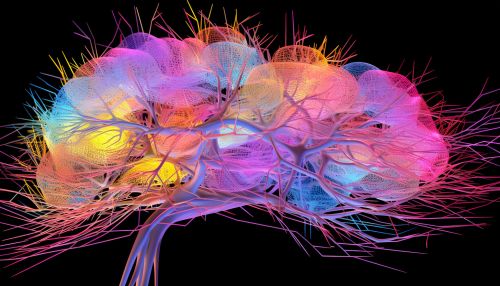Connectomics
Introduction
Connectomics is the production and study of connectomes, which are comprehensive maps of connections within an organism's nervous system. This field of study is a branch of biological neuroscience and bioinformatics that uses computational approaches to map, visualize, and understand the network of neural connections in the brain.


History and Development
The term "connectomics" was coined in 2005 by Olaf Sporns, a professor at Indiana University, and his colleagues. The development of connectomics was driven by advances in microscopy, image processing, and computational power. The field has grown rapidly since its inception, with several major projects underway worldwide, including the Human Connectome Project and the Blue Brain Project.
Methodology
Connectomics research involves several steps: data acquisition, data processing, network construction, and network analysis.
Data Acquisition
Data acquisition in connectomics involves the use of various imaging techniques to capture detailed images of the brain. These techniques include MRI, dMRI, and EM.
Data Processing
Once the data is acquired, it is processed to extract meaningful information. This involves steps such as image segmentation, registration, and tractography. Various software tools are used in this process, including Freesurfer, FSL, and TrackVis.
Network Construction
After the data is processed, it is used to construct a network that represents the connections in the brain. This network can be represented as a graph, with nodes representing neurons and edges representing connections between them.
Network Analysis
The final step in connectomics research is network analysis. This involves the use of various mathematical and computational techniques to analyze the structure and function of the network. This can include measures of centrality, modularity, and community structure.
Applications
Connectomics has a wide range of applications in neuroscience and medicine. It can be used to study the brain's structure and function, to understand the basis of neurological and psychiatric disorders, and to develop new treatments for these disorders. For example, connectomics has been used to study diseases such as Alzheimer's, Parkinson's, and autism.
Challenges and Future Directions
Despite its promise, connectomics also faces several challenges. These include the need for improved imaging techniques, the development of better algorithms for data processing and network analysis, and the need to integrate connectomics data with other types of biological data. The field is also grappling with ethical issues related to the use of connectomics data, such as privacy and consent.
Looking forward, the field of connectomics is likely to continue to grow and evolve. Advances in technology and computational methods will enable researchers to map the brain's connections with increasing detail and accuracy. This will, in turn, deepen our understanding of the brain and open up new possibilities for treating neurological and psychiatric disorders.
